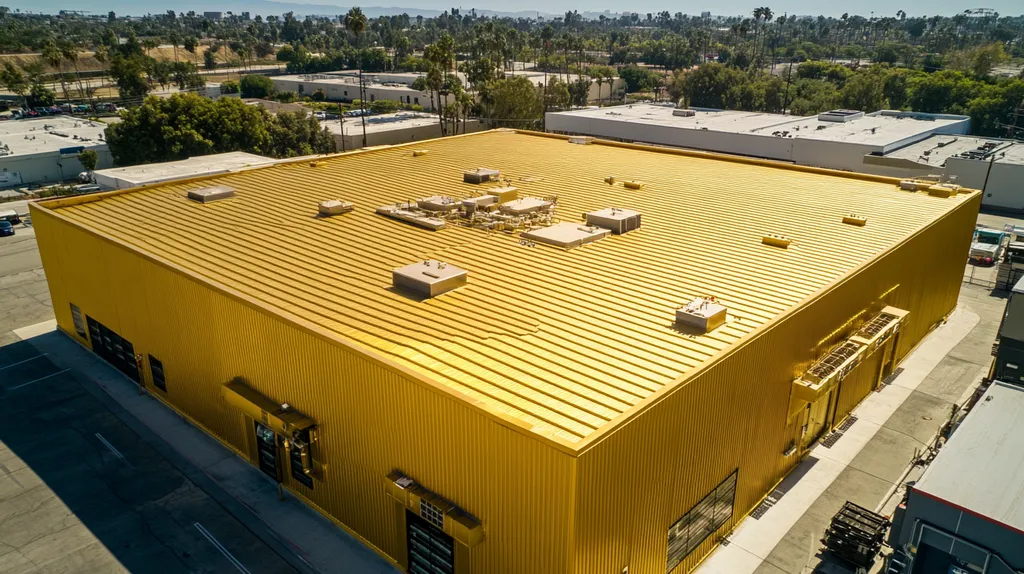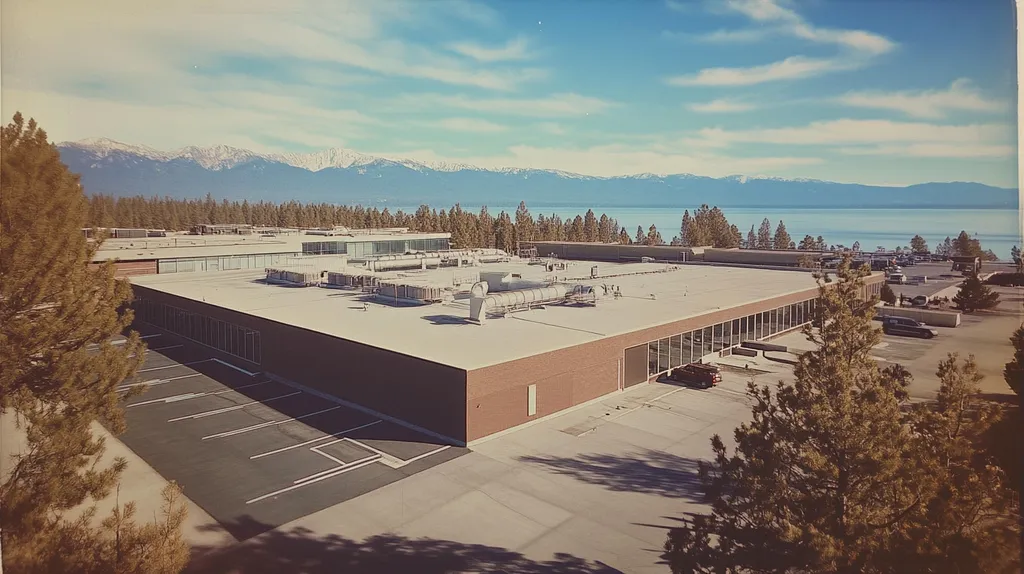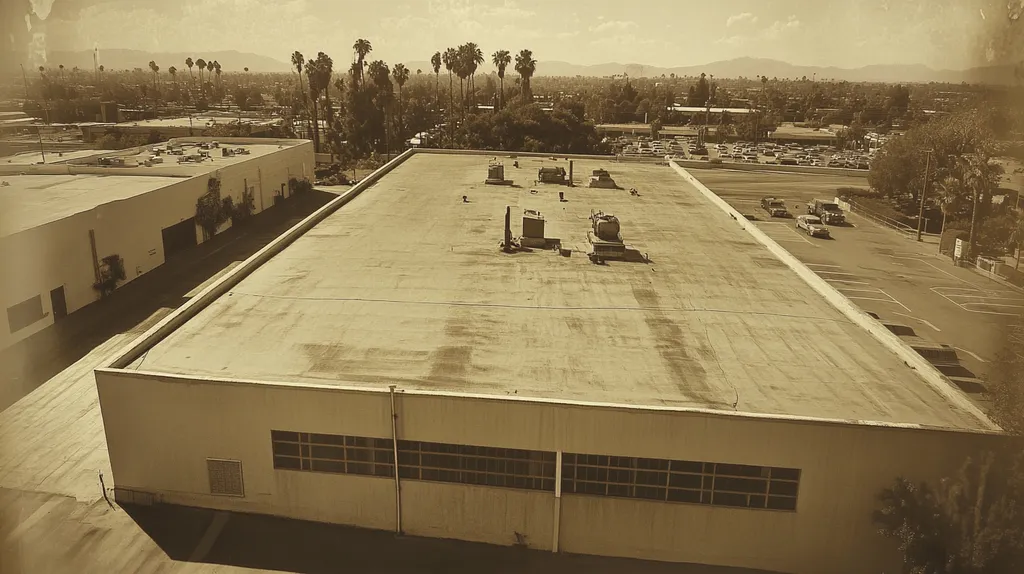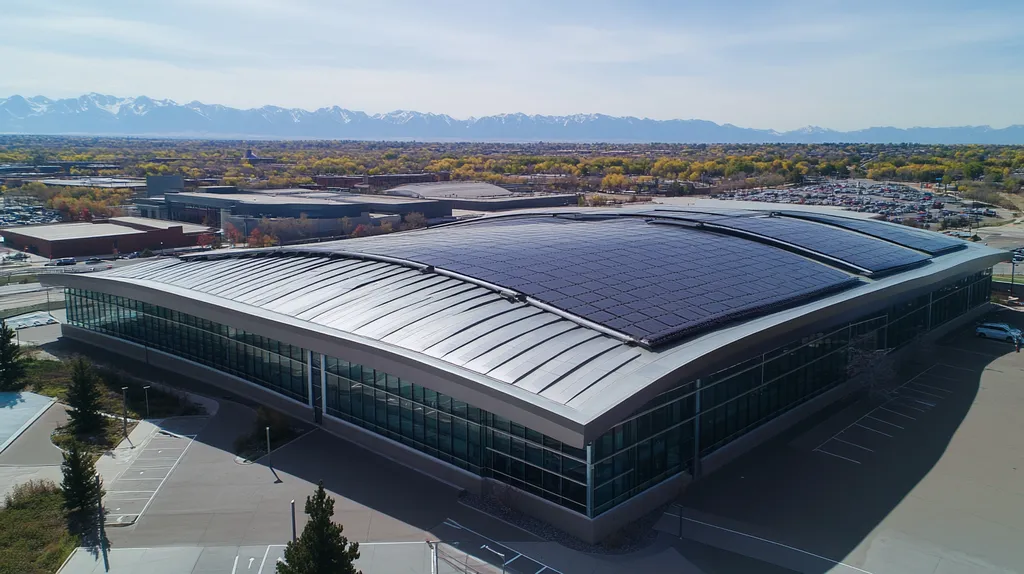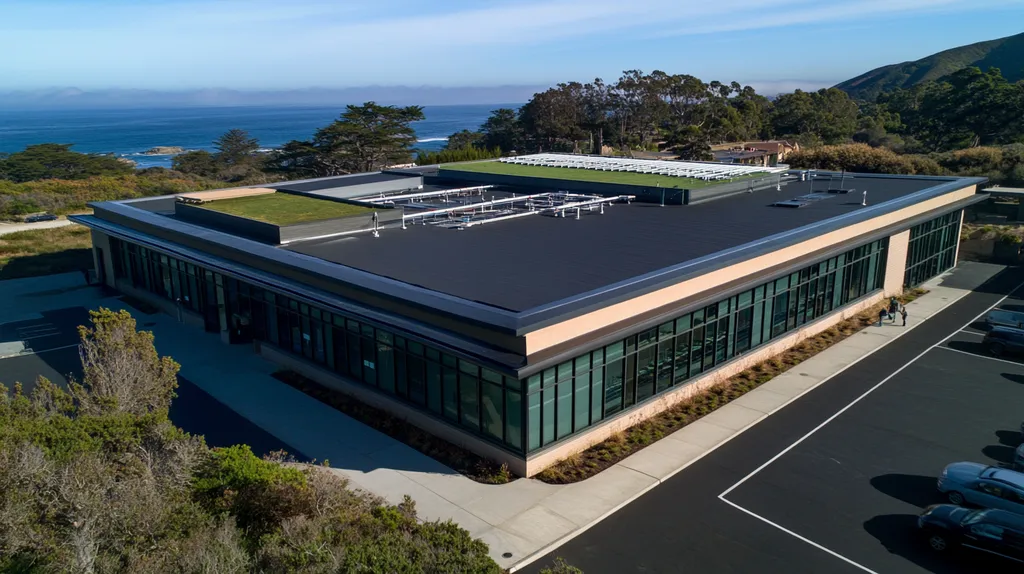Welcome to today’s Battle Royale featuring two roofing heavyweights: “TPO” in the east corner versus “PVC” in the west!
Tonight’s showdown pits these contenders against each other across six punishing rounds designed to test every aspect of their performance for Industrial Roof Material Selection.
At stake? Millions in potential costs, decades of building protection, and the critical performance demands of modern commercial and industrial facilities.
Our professional judging panel will evaluate each round on technical merit, real-world performance, and value delivery. After all six rounds, we’ll declare our ultimate champion.
Ladies and gentlemen, facility managers and building owners… it’s time to rumble!
ROUND 1: INITIAL COSTS & INSTALLATION
In the high-stakes world of industrial roofing, a $5 per square foot difference in material costs can balloon into hundreds of thousands of dollars on large projects. Yet focusing solely on upfront expenses is like buying the cheapest tires for a race car – penny-wise but pound-foolish. Today’s facility managers must juggle immediate budget constraints against long-term performance requirements.
Material Expenses
In the battle of upfront costs, TPO membranes typically run $3-5 per square foot, making them the budget-friendly champion. This pricing sweet spot has helped make thermoplastic membranes one of the fastest-growing roofing systems in the industrial sector. (source: Danforth Roofing Supply)
PVC membranes command a premium, usually $4-7 per square foot. This higher price point reflects additional manufacturing costs and enhanced chemical resistance properties.
The math here is simple – TPO’s lower material costs provide an immediate advantage for budget-conscious projects.
Installation Complexity
TPO installation is relatively straightforward, requiring standard heat-welding equipment and basic roofing expertise. The lighter weight of TPO rolls also reduces worker fatigue and speeds up the installation process.
PVC installation demands more specialized knowledge and equipment, particularly around details and penetrations. The material’s slightly stiffer nature can make it more challenging to work with, especially in colder weather.
TPO’s more forgiving nature and simpler installation requirements give it another clear advantage in this category.
Project Timeline
Speed matters in industrial roofing – every day of installation means potential disruption to operations. TPO projects typically move faster, with crews averaging 15-20% more square footage coverage per day compared to PVC.
PVC installations often require more attention to detail and additional steps for proper adhesion and seaming. While this thoroughness can pay off in longevity, it extends project timelines.
TPO’s faster installation pace earns it the advantage in timeline efficiency, completing the sweep in this round.
ROUND 1 WINNER: TPO
ROUND 2: DURABILITY & LIFESPAN
When a 100,000-square-foot industrial roof starts leaking during peak production hours, theoretical debates about material choices become painfully real. Modern manufacturing facilities can lose millions in damaged inventory and downtime from roofing failures. While both TPO and PVC membranes offer compelling durability features, their performance differences in specific conditions can make or break your facility’s protection.
Material Resistance to Environmental Factors
Understanding how roofing materials handle real-world abuse separates marketing hype from actual performance. UV radiation, temperature swings, and industrial pollutants constantly assault commercial roofs, testing their molecular integrity.
TPO membranes excel in reflecting UV rays and heat, maintaining their structural integrity even in scorching sunlight. Their advanced polymer formulation resists cracking and deterioration from thermal cycling, while the white surface reflects up to 85% of solar radiation.
PVC brings impressive chemical resistance credentials to the table, shrugging off exposure to industrial solvents and oils that would destroy lesser materials. However, prolonged exposure to extreme heat can accelerate plasticizer loss, potentially leading to brittleness over time.
For overall environmental resilience, PVC takes the ADVANTAGE thanks to its superior chemical resistance in industrial settings.
Expected Lifespan and Warranty Options
Real-world performance often diverges dramatically from warranty periods. While manufacturers tout 20-30 year warranties, actual lifespan depends heavily on installation quality and maintenance discipline.
TPO roofing technology has evolved significantly, with modern formulations addressing early-generation durability issues. Current TPO systems regularly achieve 20+ year lifespans when properly installed and maintained, with some manufacturers offering 30-year warranties.
PVC membranes have demonstrated remarkable longevity, with many original installations from the 1980s still performing well. Their proven track record supports typical warranty periods of 25-30 years, backed by decades of performance data.
PVC earns the ADVANTAGE in this category based on its established long-term performance history.
Maintenance Requirements and Lifecycle Costs
The true cost of a roofing system reveals itself in maintenance hours and repair frequency. Regular inspections and prompt repairs can double or triple a roof’s effective lifespan.
TPO membranes typically require minimal maintenance beyond routine inspections and basic cleaning. Their heat-weldable nature makes repairs straightforward, often allowing in-house maintenance teams to handle minor issues.
PVC systems demand similar baseline maintenance but can present challenges during repairs. Finding exact material matches for patches becomes critical due to chemical compatibility requirements, potentially increasing repair costs and complexity.
TPO claims the ADVANTAGE here due to its more forgiving repair characteristics and lower maintenance overhead.
ROUND 2 RESULTS: TIE
ROUND 3: PERFORMANCE FACTORS
In today’s high-stakes industrial environment, a single roofing failure can shut down million-dollar production lines or destroy irreplaceable inventory. While marketing brochures tout perfect solutions, the reality is that 40% of commercial roof failures occur due to poor material selection rather than installation issues.
Understanding how different materials perform under real-world stress isn’t just about preventing leaks – it’s about protecting your entire operation from catastrophic disruption.
Weather Resistance
Industrial roofs face a brutal gauntlet of weather extremes, from scorching summer heat to bone-chilling winter storms. Their ability to maintain structural integrity through these cycles determines not just their longevity, but your facility’s operational reliability.
TPO membranes excel in heat reflection and UV resistance, maintaining their molecular structure even under intense solar exposure. Their advanced formulation provides good flexibility in temperature extremes, though prolonged exposure to industrial chemicals can compromise performance.
PVC roofing demonstrates exceptional resistance across the environmental spectrum, particularly excelling in chemical resistance and maintaining waterproof integrity under ponding conditions. Its molecular structure remains stable even when exposed to harsh industrial pollutants and acid rain.
PVC claims the ADVANTAGE in weather resistance due to its superior chemical stability and proven performance in extreme conditions.
Impact and Puncture Resistance
In industrial settings, roofs must withstand everything from maintenance foot traffic to falling debris. A single puncture can lead to extensive water damage before it’s even detected.
TPO membranes offer good baseline impact resistance, particularly in thicker mil ratings. However, they can become more brittle over time, potentially increasing vulnerability to punctures in later years.
PVC systems maintain their flexibility and impact resistance throughout their lifespan. Their superior tensile strength and tear resistance make them particularly well-suited for facilities with frequent rooftop maintenance requirements.
PVC takes the ADVANTAGE in impact resistance thanks to its sustained flexibility and superior tear resistance.
Thermal Performance
With energy costs soaring, a roof’s thermal performance can significantly impact a facility’s bottom line. The right choice can reduce HVAC loads by up to 30% during peak cooling seasons.
TPO membranes deliver excellent solar reflectivity right out of the box, helping maintain consistent interior temperatures. Their heat-welded seams create a continuous thermal barrier that resists heat transfer effectively.
PVC roofing matches TPO’s reflective properties while offering slightly better long-term thermal stability. Both materials maintain their reflective properties well with proper maintenance, though PVC tends to clean up more easily.
This category results in a TIE, as both materials offer comparable thermal benefits when properly installed.
ROUND 3 WINNER: PVC
ROUND 4: MAINTENANCE REQUIREMENTS
In industrial facilities, roof maintenance isn’t just about preventing leaks – it’s about protecting millions in equipment and inventory. A single maintenance oversight can cascade into catastrophic failures, bringing production lines to a grinding halt. Today’s facility managers must balance the promise of “maintenance-free” systems against the harsh realities of industrial environments where even minor issues can spiral into major disasters.
Longevity and Repair Needs
Single-ply membranes like TPO and PVC are engineered for durability, but their lightweight and flexible nature makes them vulnerable to punctures in high-traffic areas. Regular inspection protocols become critical for catching issues before they compromise the entire system. (source: Solutions GC)
TPO membranes maintain their structural integrity remarkably well over time, requiring minimal intervention beyond scheduled inspections. Their heat-weldable seams remain reliable, and repairs typically involve simple patch applications that bond seamlessly with the existing membrane.
PVC systems demand more frequent attention to seam integrity, particularly in areas exposed to chemical exhaust or industrial pollutants. While repairs are straightforward, finding exact material matches becomes increasingly critical as the membrane ages.
TPO claims the ADVANTAGE here due to its lower repair frequency and simpler maintenance protocols.
Performance in Extreme Conditions
When industrial roofs face extreme weather, maintenance needs can multiply exponentially. Smart maintenance planning must account for both routine wear and sudden environmental stresses.
TPO maintains its flexibility and structural integrity through severe temperature swings, requiring little additional maintenance even after extreme weather events. Its naturally reflective surface stays cleaner, reducing the frequency of necessary maintenance washing.
PVC systems often require more frequent inspections after severe weather, particularly in facilities with high chemical exposure. Their superior chemical resistance comes at the cost of more rigorous maintenance schedules to prevent plasticizer loss.
TPO takes the ADVANTAGE for requiring less intensive maintenance under challenging conditions.
Ease of Maintenance Access
In industrial settings, maintenance accessibility can make the difference between quick repairs and extended facility shutdowns. The ability to quickly identify and address issues often depends on how easily maintenance teams can work with the roofing material.
TPO’s lighter weight and more flexible nature makes it easier for maintenance teams to navigate and inspect. Its white surface clearly shows damage or contamination, allowing quick identification of potential problem areas.
PVC’s slightly stiffer composition can make detailed inspections more challenging, especially around complex roof penetrations and equipment mounts. While durable, its surface can mask early warning signs of deterioration.
TPO earns the ADVANTAGE for superior maintenance accessibility and problem visibility.
ROUND 4 WINNER: TPO
ROUND 5: SUSTAINABILITY CREDENTIALS
In today’s industrial landscape, sustainability isn’t just about environmental responsibility – it’s about survival. With carbon regulations tightening and energy costs skyrocketing, choosing the wrong roofing material can lock facilities into decades of unnecessary expenses and compliance headaches. Meanwhile, investors increasingly demand transparent ESG metrics, making rooftop sustainability visible on quarterly reports.
Environmental Impact
Modern industrial roofing must balance immediate performance against long-term environmental consequences. Manufacturing processes, chemical compositions, and end-of-life disposal all factor into a material’s true environmental footprint.
TPO membranes offer impressive environmental credentials through their simpler chemistry and manufacturing process. Their formulation requires fewer harmful chemicals and produces minimal waste during production, while their reflective properties reduce building energy consumption from day one.
PVC manufacturing involves more complex chemical processes and higher energy requirements. While modern plants have reduced emissions significantly, the chlorine-based chemistry remains more resource-intensive than TPO production.
TPO claims the ADVANTAGE for its cleaner manufacturing process and reduced chemical complexity.
Recyclability and Waste Reduction
With landfill costs rising and disposal regulations tightening, a roofing material’s end-of-life options can significantly impact total ownership costs. Smart facility managers now factor recycling potential into initial material selections.
TPO membranes can be fully recycled into new roofing materials, creating a closed-loop system that minimizes waste. Their simpler chemical composition makes recycling more cost-effective and widely available.
PVC recycling faces more challenges due to its complex chemical structure and additives. While technically recyclable, finding facilities equipped to handle PVC roofing material often proves difficult and expensive.
TPO takes the ADVANTAGE for superior recyclability and simpler waste management.
Energy Performance
Rooftop energy efficiency has become a major factor in facility operating costs. A single degree of internal temperature change can represent thousands in annual HVAC expenses for large industrial spaces.
TPO membranes maintain exceptional solar reflectivity throughout their lifespan, reducing cooling loads and urban heat island effects. Their surface stays naturally cleaner, preserving reflective properties with minimal maintenance.
PVC delivers comparable initial reflectivity but tends to accumulate more dirt over time, requiring more frequent cleaning to maintain energy performance. Their slightly darker color options can also impact thermal efficiency.
TPO earns the ADVANTAGE for superior long-term energy performance with lower maintenance requirements.
ROUND 5 WINNER: TPO
ROUND 6: SPECIALIZED APPLICATIONS
When a pharmaceutical plant’s roof fails above a sterile manufacturing line, the cost isn’t measured in repair bills – it’s measured in millions of dollars of contaminated product and FDA compliance violations. Specialized industrial facilities face unique challenges that transform routine roofing decisions into mission-critical choices.
From chemical processing plants to food manufacturing facilities, certain industries demand roofing systems that go far beyond basic weather protection. A single material compatibility issue can compromise entire production lines or trigger regulatory shutdowns.
Chemical Resistance Requirements
Industrial facilities often generate caustic vapors, acidic emissions, and chemical contamination that can rapidly degrade standard roofing materials. What works perfectly well on a warehouse can fail spectacularly when exposed to industrial processes.
TPO membranes offer moderate chemical resistance suitable for light industrial environments. However, prolonged exposure to harsh solvents or acidic compounds can compromise their molecular structure, potentially leading to premature failure.
PVC roofing excels in chemical resistance, maintaining its integrity even when exposed to industrial solvents, oils, and acids. This inherent chemical stability makes it the go-to choice for facilities with challenging chemical environments.
PVC claims the clear ADVANTAGE in chemical resistance capabilities.
Temperature Control Requirements
Modern manufacturing processes often demand precise temperature control, with even minor fluctuations impacting product quality. The right roofing system plays a crucial role in maintaining these critical environments.
TPO membranes provide excellent solar reflectivity and thermal performance, helping maintain consistent interior temperatures. Their heat-welded seams create an effective thermal barrier that supports strict climate control requirements.
PVC systems match TPO’s thermal performance while offering superior resistance to thermal cycling. Both materials effectively support temperature-sensitive operations when properly installed and maintained.
This category results in a TIE as both materials deliver comparable thermal control benefits.
Design Flexibility Requirements
Specialized facilities often feature complex roof designs with numerous penetrations for ventilation, equipment mounts, and process systems. When selecting roofing materials for these applications, flexibility and adaptability become critical factors. (source: Preferred Inc.)
TPO membranes excel in conforming to irregular shapes and accommodating complex penetration details. Their natural flexibility and lighter weight make them easier to work with around tight corners and unusual geometries.
PVC’s slightly stiffer composition can present challenges when dealing with intricate details or unusual roof configurations. While still workable, it requires more effort and expertise to achieve proper installation in complex applications.
TPO takes the ADVANTAGE for superior design flexibility and ease of detail work.
ROUND 6 WINNER: TPO
AND THE WINNER IS…
After six punishing rounds of technical analysis, the judges’ scorecards are in! With victories in Rounds 1, 4, and 5, plus split decisions in Rounds 2 and 6, TPO claims the Industrial Roofing Championship belt!
TPO dominated with superior cost-effectiveness, simpler maintenance requirements, and impressive sustainability credentials. Its combination of budget-friendly pricing, straightforward installation, and excellent energy performance proved unbeatable in today’s competitive industrial marketplace.
However, don’t count PVC out! This seasoned veteran showed its worth in Round 3 and remains the undisputed champion for facilities facing harsh chemical exposure or requiring maximum durability. When extreme conditions demand ultimate chemical resistance, PVC still packs the stronger punch.
Remember, folks: Every facility brings its own unique requirements into the ring. Local climate conditions, building specifications, and operational demands can dramatically impact material performance. While TPO takes home the overall victory tonight, your specific situation may favor a different contender.
Professional consultation with qualified roofing experts remains essential for determining the best choice for your particular facility. They’ll help you evaluate all the variables that could influence your roofing system’s long-term success.
Ladies and gentlemen, in the high-stakes world of industrial roofing, victory doesn’t just come from picking the crowd favorite – it comes from matching your specific facility’s needs with the right material’s strengths. Choose wisely, and may your roof reign supreme!
FREQUENTLY ASKED QUESTIONS
Q. What are the initial costs for a commercial roof?
A. TPO membranes typically cost $3-5 per square foot, while PVC ranges from $4-7. TPO often offers a better value, leading to a substantial budget difference for large projects.
Q. How does durability affect industrial roof performance?
A. Both materials are durable, but PVC excels in chemical resistance, making it ideal for harsh environments. TPO, on the other hand, offers good UV resistance and thermal durability.
Q. How do weather conditions impact commercial roofs?
A. PVC performs better under harsh conditions, especially chemical exposure. TPO shines in heat reflection but can struggle against certain harsh chemicals over time.
Q. What are the maintenance requirements for industrial roofs?
A. TPO typically requires minimal maintenance and easier repairs, while PVC demands closer inspection of seams. Regular upkeep is crucial to extend the roof’s lifespan.
Q. Which roofing material is more sustainable?
A. TPO has a cleaner manufacturing process and is fully recyclable, providing superior sustainability. PVC is trickier to recycle, making it less eco-friendly overall.
Q. Which roofing material suits specialized industrial applications?
A. PVC shines in chemical resistance, ideal for environments with harsh substances. TPO is better for flexible design needs, accommodating complex roof shapes effectively.
Q. How does energy efficiency vary between TPO and PVC?
A. TPO excels in long-term energy efficiency due to its exceptional solar reflectivity and lower maintenance needs. PVC has comparable reflectivity but can require more upkeep to maintain efficiency.

